🎗️Lonny's War Update- October 543, 2023 - April 1, 2025 🎗️
🎗️Day 543 that 59 of our hostages in Hamas captivity
**There is nothing more important than getting them home! NOTHING!**.
“I’ve never met them,But I miss them. I’ve never met them,but I think of them every second. I’ve never met them,but they are my family. BRING THEM HOME NOW!!!”
There is no victory until all of the hostages are home!אין נצחון עד שכל החטופים בבית
Red Alerts - Missile, Rocket, Drone (UAV - unmanned aerial vehicles), and Terror Attacks and Death Announcements
*1:35am - Gaza Envelope- rockets fired from Gaza - Sderot, Ibim, Or Haner - rockets intercepted
- **Details of Israel's Full Proposal to Mediators Revealed**
The proposal Israel delivered to Hamas through mediators includes the release of 10 hostages in exchange for terrorists, a 40-day ceasefire, and information on the condition of all hostages—both living and deceased. Israel clarified: "The IDF will create a buffer between the Gaza arena and the Israeli population to prevent any threat." The threat conveyed to Hamas: "If you do not release hostages, the gates of hell will open, exactly as Trump said." Full details.
This evening (Monday), *Mishpat HaMerkazi* published the full details of Israel's proposal, which was delivered yesterday to the mediators. Along with the proposal, Israel conveyed the message that "in any final deal, the IDF will remain in the perimeter and act as a buffer between the Gaza arena and the Israeli population to prevent any threat."
**Details of Israel's Proposal:**
- Release of 10 hostages in exchange for terrorists, with the ratio to be determined between the parties.
- In addition to the 10, the release of kidnapped soldier Idan Alexander as a "gesture" to U.S. President Donald Trump.
- 40 days of ceasefire.
Currently, the IDF is working to relocate Gaza residents and expand security zones and the logistical blockade on the Strip. This is the missing component that the defense establishment believes will push Hamas to provide a constructive response to Israel's proposal.
Israel is still awaiting a response from the mediators after delivering the proposal yesterday. Talks were held at various levels along the axis between Israel, the U.S., Qatar, and Egypt.
Israel also conveyed several additional demands to the mediators:
- Food supplies must reach only the civilian population.
- The condition of the hostages must be maintained.
- Ensuring proper nutrition and healthcare for the hostages.
Assessments in Israel suggest that the logistical and humanitarian blockade imposed on Gaza, along with military pressure, is having an effect, and there are shifts in Hamas' position. However, they also warn: If Hamas does not respond soon to the new proposal and show willingness to move forward, the pressure will intensify.
- **On Day 5:** Hamas must provide information on all hostages, both living and deceased.
- **On Day 10:** The murderous terrorist organization will release 16 deceased hostages.
- **During the ceasefire:** Discussions will be held on the next phase of the deal.
**Additional Recommendations**
Israel warned Hamas through the mediators: "This is your last chance. After this, if you do not release hostages, the gates of hell will open—exactly as President Trump said." Link
- Knesset passes bill ensuring support for families of released hostages
The Knesset has approved a bill ensuring continued psychological and medical care, as well as financial support, for families of hostages who return from captivity, according to a joint statement from the Defense Ministry, the National Insurance Institute, and the Hostages, Missing Persons and Returnees Directorate of the Prime Minister’s Office.
According to the statement, the approved legislation grants families an adjustment grant of up to NIS 30,000 ($8,000). It also ensures that the families will maintain certain benefits that they received while their loved one was in captivity, including rehabilitation assistance and psychosocial support.
“This measure recognizes that the family of a returned hostage plays an integral and central role in their recovery process while also requiring rehabilitation support themselves,” the statement explains.
According to the statement, families can also appeal to a special exceptions committee if additional support is needed due to the challenges they face.
Gaza and the South
- "Hamas fights Israel, Israel fights Hamas, and we are in immense suffering": Gazan journalist in interview from the Strip
Sami Obeid from Gaza City said he participated in protests against Hamas: "Residents are saying, 'Enough, stop it, get out of Gaza's government'" • He also accused Israel: "For 30 days, my family and I haven't eaten meat—why is Israel imposing collective punishment on me?" • According to him, Hamas brought a Nakba upon Gaza on October 7—and since then, they haven’t been able to escape the crisis.Sami Obeid, a journalist and resident of Gaza City, was interviewed today (Monday) by Ofer Hadad on "Today’s Edition" and spoke about his opposition to Hamas' rule, which he claims only brings suffering to the residents of the Strip."For 30 days now, there has been a complete siege on Gaza," Obeid began. "Israel isn’t allowing anything into the Strip, saying it’s leverage against Hamas. But what does Hamas have to do with the residents of Gaza? Hamas fights Israel, Israel fights Hamas—they’ve been negotiating for 540 days with no results, and we are in immense suffering."*Hamas took civilians in Gaza as hostages and is holding them there, even in people’s homes. To claim there’s no connection between Hamas and the residents... Maybe you should protest more forcefully against Hamas to release the hostages?*"I participated in two protests, and I always say—the residents tell Hamas, 'Enough. Stop it, get out of Gaza’s government.' Hamas says, 'Let 2.5 million die, we’re staying in power.' We don’t want Hamas, and we oppose Hamas."*Would you want Israel to succeed in toppling Hamas' rule? Assuming there are no hostages and they manage to get food and water to you.*"Hamas, let me, as a resident of Gaza, live with dignity. You brought a Nakba upon us on October 7. Hamas made a mistake—a madman threw a stone into a well that all the wise men can’t retrieve, and we can’t escape this crisis. But why is Israel imposing collective punishment on me? For 30 days, my family and I haven’t eaten meat."*They have meat—they could export to Egypt the amount of meat they have in storage.*"Hamas has ruled Gaza for 20 years. They lied to Gazans—'God sent me to liberate Jerusalem from the Jews.' I always said this was a lie and deception, but people were scared, they thought it was true. I kept saying it was false and would never happen, and now we’re suffering because of it. But they made a mistake—why should I suffer because of Hamas?"*You need to point the accusing finger inward. You’ve started protesting—let’s see if it leads to results.*Last week, several hundred residents protested in Gaza against Hamas for several days. At first, Hamas security forces avoided violently suppressing the protests, fearing it would escalate the situation, and instead tried to redirect anger toward Israel.However, by the end of last week, no protesters were seen in Gaza. Systematic measures of suppression and intimidation were carried out by the terrorist organization.Palestinian sources reported that between Saturday and Sunday, Hamas kidnapped, tortured, and executed a young Gazan, Oday al-Rabai from Tel al-Hawa, who had participated in protests against the terror group last week. In response, his family called for revenge, saying, "We will avenge these criminal murderers, even if it takes time."Another Gazan activist revealed in a conversation with N12 that Hamas is threatening protesters in the Strip, holding talks where they warn that anyone who protests will be harmed. "They (Hamas) reached out to me through intermediaries and threatened me too. They said they’re 'waiting for me' and that I’d be hurt. I don’t leave the house and understand I have to be careful not to be harmed. I’m afraid of these thugs."link
- IDF orders evacuation from northern Gaza’s Beit Hanoun after rocket fire at Israel
Following the rocket fire from the northern Gaza Strip on Sderot this morning, the IDF issues an evacuation warning for Palestinians in the Beit Hanoun area.
In a post on X, the IDF’s Arabic-language spokesman, Col. Avichay Adraee, publishes a map of the area that is to be evacuated, saying that it is a “final warning” before the IDF carries out strikes there.
The map also shows the IDF’s expanded buffer zone along the border with the Strip.
The rocket launched at Sderot was intercepted by air defenses, and there were no reports of injuries.
- Lebanese officials say toll in Israeli strike in Beirut rises to 4
At least four people were killed and seven other people were wounded in the early morning Israeli airstrike on the apartment of a top Hezbollah official, according to the terror group and Lebanese health ministry.
An additional seven people were wounded, the ministry says.
Among those killed in the airstrike were Hezbollah official Hassan Bdair and his son, Ali, according to a Hezbollah official who spoke on condition of anonymity because of not being authorized to speak publicly to the media. The official said that the two other people killed were their neighbors: two siblings, a young man and a woman.
Israel says Bdair was also a member of Iran’s Quds Force and was working with Hamas to plan imminent attacks against Israelis.
- Images show slain Hezbollah operative with top Iran IRGC general
Images on social media show a Hezbollah operative who was killed overnight in an Israeli strike on a flight with a top Iranian general.
The photo shows Hassan Bdair sitting alongside Iraqi militia leader Abu Mahdi al-Muhandis and Iranian IRGC Quds Force commander Qassem Soleimani.
Both Soleimani and al-Muhandis were killed in a US airstrike in Iraq in January 2020.
Soleimani was seen as the architect of Iran’s regional military activities and is hailed as a national icon among supporters of Iran’s theocracy.
Israel says that Bdair was a member of Hezbollah’s Unit 3900 and the Quds Force and was directing Hamas terror attacks.
- Source close to Hezbollah says Israel strike targeted operative in charge of liaising with Palestinians
Lebanon PM says Israeli strike in Beirut a ‘clear breach’ of ceasefire deal
- There’s no justice’: Palestinian villagers reel after brutal settler, IDF rampageJINBA, West Bank — The residents of the Palestinian hamlet of Jinba in the South Hebron Hills region of the West Bank have been reeling from a brutal Friday raid on their homes by settler extremists, which left three men hospitalized, including a 15-year-old boy in intensive care due to severe injuries to his head.Immediately following the violent assault against the residents of the ramshackle dwelling, IDF forces — among them local settlers who have been mobilized — arrested 22 male residents of Jinba. The same units then raided the hamlet in the dead of night hours later, destroying food products made in the village, smashing windows and laying waste to a school and clinic.Speaking with The Times of Israel in Jinba, residents accused IDF soldiers of standing by during the settler rampage and failing to stop the violence and of blocking a Red Crescent ambulance sent to Jinba to evacuate the wounded for over two hours.They also accused the IDF unit which raided their homes at night of carrying out wanton destruction and of acting “vengefully,” expressing no hope that anyone would be brought to justice.“The boy was bleeding out of his mouth and out of his ears,” said Jinba resident Layla Ibrahim Muhammad as she recalled the attack.“When the soldiers came, we said, ‘Bring an ambulance,’ but they didn’t help. We said, ‘Someone is going to die lying on the ground,’ but no one listened to us.”Ahmad al-Amur, a 15-year-old boy, lies stricken and bloodied on the floor of his home in Jinba after being allegedly assaulted and beaten by settler extremists, March 28, 2025. (Courtesy al-Amur family)The impact of the two-stage assault was still in clear view in different parts of Jinba on Sunday.Blood from two victims, a 64-year-old father and his 15-year-old son, was spattered about the courtyard of their home and the entrance to the cave dwelling where they live. The remnants of a security camera hung smashed from a wall.
In a separate part of the hamlet, windows were broken, the school was heavily vandalized, and the dwelling’s clinic was wrecked, with the debris of destroyed fittings and appliances strewn all across the floor.
Two police investigators arrived in the village during this reporter’s visit and took testimony from some of the residents, although they did not take forensic evidence from the scene.
The police did not reply to a request for comment as to the status of the investigation and whether any of the assailants have been questioned, detained, or arrested.
Arrests, let alone indictments or convictions, are highly rare in cases of settler violence. The head of the police’s West Bank division is currently under investigation for refusing to crack down on the phenomenon in order to curry favor from far-right National Security Minister Itamar Ben Gvir.
IDF disciplines troops
The IDF issued a statement on Monday night announcing that it had disciplined several officers and troops for vandalizing Palestinian property in Jinba after an investigation it conducted into the incident.
The IDF’s statement did not address questions by The Times of Israel regarding the villagers’ claims that troops had stood by while the settler extremists attacked residents and prevented a Red Crescent ambulance from evacuating the wounded.
“The commander [of the IDF’s Central Command,] Maj. Gen. Avi Bluth, concluded that this was a severe incident that contradicts the level of professional and ethical [conduct] expected of IDF soldiers in operational activities in general and in Judea and Samaria (West Bank) in particular,” the military’s statement said.
IDF Chief of Staff Lt. Gen. Eyal Zamir went to Jinba himself to investigate the incident on Sunday.
The raid on Jinba was the latest in a series of violent settler attacks against Palestinian hamlets in the South Hebron Hills region, known by Palestinians as Masafer Yatta, over the last few weeks, in which extremists have assaulted and terrorized Palestinian residents, destroyed their property, and harassed them as they graze their livestock and do agricultural work.
Masafer Yatta was the subject of a joint Palestinian-Israeli documentary called ‘No Other Land,’ which won an Oscar earlier this year.
Nidal Younis, the head of the Masafer Yatta council and one of the 22 arrested on Friday, told The Times of Israel that “fear and anxiety are dominating people’s lives” in the region. He accused the Israeli government, army and police of complicity in the violence.
Nidal Younis (left), head of the Masafer Yatta council, sits in the village of Jinba with another resident following a violent raid by settlers and then IDF troops on the dwelling, March 30, 2025. (Jeremy Sharon / The Times of Israel)
Rampage: Part 1
During the assault on Friday morning, some 20 masked men armed with clubs and rocks rampaged through the hamlet, beating the residents and destroying property, residents said.
Hours earlier, a masked Israeli man on a quad bike, apparently from a nearby settlement or illegal outpost, approached a Palestinian shepherd who was grazing his sheep on pasture land belonging to Jinba located several hundred meters outside the hamlet.
Video footage of the incident shows the masked man beginning to harass the shepherd and then shoving him to the ground.
Following that incident, settler activists accused “rioting Arabs” of attacking two “Jewish shepherds,” and published images of an apparently injured Israeli man wearing the exact same clothing as the masked man on the quad bike, as he was receiving treatment from Magen David Adom paramedics.
It is unclear exactly how that man and the second Israeli were injured, although one resident of Jinba stated that during one stage of the raid on the hamlet, some of the villagers had tried to defend themselves and repel the settlers.
Blood is spattered over the spot in the al-Amur home in the Palestinian West Bank hamlet of Jinba where Aziz al-Amur lay after being allegedly violently assaulted by settler extremists, waiting to be evacuated to hospital, March 28, 2025. (Jeremy Sharon / The Times of Israel)
While the exact sequence of events is unclear, it appears that following the incident with the shepherds, some two dozen settler extremists entered Jinba at around 8:45 a.m.
During their rampage, they severely beat three villagers, including Aziz al-Amur, 64, his 17-year-old son Qusai, and his 15-year-old son Ahmad.
Qusai was beaten first, with video footage showing one attacker assaulting him repeatedly with a club, then another assailant smashing him in the head with a rock, causing him to fall to the ground, whereupon two other assailants kicked and beat him. Then, the first assailant returned to ferociously club Qusai repeatedly as he lay prostrate on the ground.
Following the assault on Qusai, Ahmad and Aziz were then also subjected to severe beatings inside their home.
Aziz suffered head and chest injuries and underwent surgery for skull fractures; Ahmed was in intensive care as of Sunday, and Qusai suffered a broken arm, bruises and cuts. At least two other villagers were also injured in the attack.
Aziz and Qusai were discharged from the hospital on Sunday and filed complaints to the police over the incident. Ahmad remained hospitalized.
The Palestinian West Bank hamlet of Jinba, March 30, 2025. (Jeremy Sharon / The Times of Israel)
Two other men, Maher Mohammed and his son Osama, required medical attention due to the assault, with Maher undergoing tests on his kidneys and Osama having required hospitalization.
Rampage: Part 2
Following the incident, an IDF force including soldiers from the local IDF regional defense unit which is manned by local settlers, entered Jinba an hour or two later and arrested 15 men and seven minors from the village on suspicion of assaulting the two Jewish shepherds.
Villagers told The Times of Israel that two residents of the nearby Talia’s Farm illegal outpost were part of the unit that entered Jinba and arrested the villagers. Talia’s Farm has received state funding from the Agriculture Ministry despite being illegal.
Jinba resident Issa Younis Hamad Abu Aram said that he and the other villagers detained by the soldiers were handcuffed, blindfolded and taken to a nearby military base. Two hours later, they were taken by bus to the Kiryat Arba police station where they were held for hours without water.
When the daily Ramadan fast ended, they were given just one bottle for all 22 detainees.
At around 11 p.m., they were finally given sufficient water for everyone, Abu Aram continued.
Of those arrested, 15 were released in the early hours of Saturday morning, while seven remained in detention and were set to have a court hearing on Tuesday.
The IDF and police did not report any arrests of settlers suspected of attacking the villagers.
Rampage: Part 3
The settler raid was not the last of the violence Jinba’s residents were to endure.
In the dead of night, around 2 a.m. on Saturday, the IDF’s regional defense unit returned to Jinba and ransacked the village, terrifying its remaining residents, most of whom were women since the majority of the men had been arrested.
A medical clinic room vandalized by IDF troops in the Palestinian West Bank hamlet of Jinba, March 30, 2025. (Jeremy Sharon / The Times of Israel)The IDF originally stated that the unit had been searching for weapons in the village, although it later said that the incident was under investigation.
During the search, the soldiers emptied the contents of cupboards, fridges and freezers and threw them all over the homes, residents charged.
They allegedly destroyed several dozen liters of yogurt, butter and other dairy products made in the village by pouring them on the floor, as well as several dozen liters of olive oil. They also slashed open sacks of wheat.
In Abu Aram’s home, soldiers allegedly threw ash from a heating furnace all over the residence and smashed his toilet.
The soldiers vandalized an Italian-funded school, smashing windows and turning classrooms upside down, residents said. IDF personnel rampaged through Jinba’s clinic, destroying a sink in one of the medical rooms and flinging the furniture and contents of the facility all across the floor.
During the search, the soldiers ordered around 20 women and young children who had been sleeping in the same home together for safety purposes to get out of the house, and forced them to kneel on the ground with their hands on their heads, the residents said.
They also opened the gates to a barn housing lambs, five of which escaped as a result.
‘The soldiers didn’t intervene’
Layla Ibrahim Muhammad, Abu Aram’s wife, said she saw the settler attack unfold.
She said that after the al-Amur family members were assaulted, it took two hours before the IDF soldiers allowed the Red Crescent ambulance the villagers had called to enter Jinba and take the father and his sons to the hospital.
“The soldiers saw the attack, they allowed it to happen and didn’t intervene,” Layla alleged regarding the initial settler attack.
“We shouted for the soldiers to intervene, but they didn’t. When people tried to defend the village, that’s when they intervened and started making arrests.”
Layla was also one of the women who were forced out of their homes in the middle of the night during the IDF search raid late Friday night.
When the soldiers approached the lamb barn, Layla went up to them to tell them what was inside, but one of the soldiers pointed his rifle at her and told her to move away, she said.
Maher Ahmed, a resident of the Palestinian West Bank hamlet of Jinba, sits bloodied on pasture land outside the dwelling, after being assaulted by a masked settler, March 28, 2025. (Courtesy)Tharwat Issam Muhammad, 48, described how one soldier approached the crib in which her four-month-old granddaughter was sleeping. The soldier asked what was in the crib, and when Tharwat told him there was a baby he nevertheless yelled at her to remove the blanket so he could see, she said.
Tharwat’s 12-year-old grandson, who has a hearing and vision impairment, was among those detained earlier in the day. “They came to the village to take vengeance,” alleged Tharwat, saying that she and all the other women and children had been terrified during the raid.
Asked if she believed those responsible would be brought to justice, Layla said: “We are a people living in injustice.” She said that it was official state forces who were responsible for the second part of the raid, and who failed to stop the first part. “In Israel, there is no justice,” she averred.
“Even before the attacks, we lived in fear and trauma all the time. We were afraid to take the sheep out. The settlers come right up to our houses with their sheep.” Layla continued.
“The police need to protect us. Even the media didn’t come in time. The settlers make false claims against us, then they attack us and then go to complain about us. If the government acted justly, this wouldn’t happen.”
“We are in great fear to continue living here,” said Maysoun Ahmad Issa Hammad, 53. “Our children say, ‘We don’t want this life,’ but we older ones still want to stay.” link with horrifying video of part of the attack by settlers
- IDF says it uncovered bomb-making lab in West Bank’s Tulkarem
The IDF says troops of the Kfir Brigade operating in the West Bank city of Tulkarem located a bomb-making lab.
The lab was being used to build makeshift roadside explosive devices as well as pipe bombs, according to the military.
In a separate operation, the IDF says troops of the Commando Brigade and Nahal Brigade and Shin Bet agents detained 12 wanted Palestinians in the towns of Qabatiya and Tammun.
A further 15 wanted Palestinians were detained elsewhere in the West Bank overnight, the IDF adds.
- Netanyahu’s “total victory” strategy is based on continuing to kill Palestinians in Gaza, including some of the remaining Hamas political and military leaders. No doubt that he has instructed the army to find and kill Mohammed Sinwar (Israel always needs an ultimate enemy figure to hold responsible for what the enemy does). A new addition to the Israeli “strategy” is to threaten to annex pieces of Gaza to Israel permanently in order to persuade Hamas to release hostages, with or without a deal. Israel is still talking about a negotiated deal for some of the hostages – living and dead in exchange for a negotiated list of Palestinian prisoners, but believes that Israel can secure the release of hostages without a deal. Netanyahu’s strategy is based on the grand mistake of thinking that Hamas works under the same logic as Israel and will give in to this kind of pressure. Hamas’s official messages continue to say that in exchange for ending the war and Israel withdrawing from Gaza, they will release all of the hostages. This message has been the same for months. Of course, we have no way of knowing if Hamas will in fact ever release all of the hostages or even if they know where all 59 Israeli hostages are located. But that is not a reason not to make a deal with Hamas to release all of the 59 hostages. Israel would only release Palestinian prisoners in exchange for hostages released and Israel always has the possibility of returning to fighting in Gaza, even if there are international guarantees that it won’t. When have international guarantees are international law ever prevented Israel from doing what it wants to do? What Israel and Netanyahu fail to realize is that Hamas is not very likely to give in to this kind of Israeli pressure. With their backs against the wall, Hamas is much more likely to use their own pressure on Israel – as they have threatened to do several times over the last year and a half – to execute Israeli hostages. Hamas will not surrender under Israeli pressure. Hamas could reach an agreement with the Arab countries and with other Palestinians to end their control over Gaza. They could agree that Hamas political and military leaders leave Gaza – but not as a result of Israel pressure and threats, but rather as part of a deal with the Arab countries and other Palestinian leaders. Hamas could even agree to end their armed struggle in Gaza as part of that agreement. But they will not do it as a result of Israeli military pressure or Israeli threats to annex Palestinian land. In that case, they will enforce their steadfastness and resist with greater resolve, even carrying out the threat to execute Israeli hostages. That is the part of Netanyahu’s strategy which is not taken into account and if it is, then Netanyahu probably believes that if Hamas executes Israeli hostages, Israel will have the moral right and the greenlight from Trump to finish the job in Gaza – which means killing a lot more Palestinians and taking full control over Gaza including the forced evacuation of Gazans. How will the Israeli public respond if Israel’s strategy leads to the execution of hostages? We don’t know and hopefully we won’t have to know. But this should not be erased as a very possible scenario.
- (Gershon Baskin, April 1, 2025)
- 120 terrorists invaded Erez Crossing, adjacent base on Oct. 7, as troops made brave stand
Investigation finds IDF was unable to defend large facility on border with Strip; confusion among commanders led some soldiers to be left in base as terrorists continued rampageOn the morning of October 7, 2023, some 120 Hamas-led terrorists stormed into the Erez border checkpoint with the Gaza Strip and an adjacent military base in two waves. The troops stationed there were unable to defend the facility, and it quickly fell to the terrorists, who killed nine soldiers and abducted three others.
On Sunday, the Israel Defense Forces presented its probe into the Hamas attack on the Erez Crossing and the adjacent base, which houses the Coordination and Liaison Administration to the Gaza Strip, a unit that is part of the Defense Ministry’s Coordinator of Government Activities in the Territories. The unit is staffed by IDF soldiers.
Before the war, some 18,000 Gazans had work permits to enter Israel via the Erez Crossing. The checkpoint was largely destroyed by the Hamas terror group during its October 7 onslaught, and all work permits have been revoked.
The Erez attack probe was part of the IDF’s detailed investigations of some 40 battles that took place that day. The investigation highlighted colossal failures in the military’s ability to defend a military site near a border, as well as the heroism of some troops who fought that day, and the successful use of the Israeli Air Force to prevent many more terrorists from invading the base.
The Erez Crossing and Gaza liaison base were among many IDF facilities that were attacked in Hamas’s October 7 onslaught, during which some 5,600 terrorists stormed across the border, massacred some 1,200 people, and took 251 hostages to Gaza. Most victims were civilians.
The probe, carried out by Col. Gidi Kfir-El, covered all aspects of the fighting in the checkpoint and base that day.
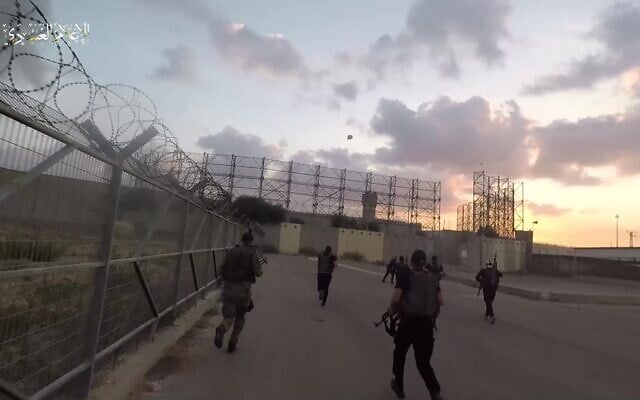 Hamas terrorists attack an army base next to the Erez Crossing, on October 7, 2023, in footage released by the terror group. (Screenshot: Telegram)
Hamas terrorists attack an army base next to the Erez Crossing, on October 7, 2023, in footage released by the terror group. (Screenshot: Telegram)Kfir-El and his team spent hundreds of hours investigating the battle at the Erez Crossing and Gaza liaison base, reviewing what the IDF said was every possible source of information — the IDF’s radio communications, surveillance cameras, the soldiers’ WhatsApp messages, footage taken by the Hamas terrorists and interrogations of captured terrorists. Kfir-El also interviewed soldiers who survived the attack and made visits to the scene.
The probe was aimed at drawing specific operational conclusions for the military. It did not examine the wider picture of the military’s perception of Gaza and Hamas in recent years, which was covered in separate, larger investigations into the IDF’s intelligence and defenses.
Kfir-El’s team stated that “the IDF did not succeed in its mission to protect the base.” However, the investigators said that “the engagement by the troops in the first hour aided in saving many lives and preventing more extensive harm.”
“Additionally, Air Force strikes neutralized the infiltration of dozens more terrorists,” the team added.
Nine soldiers were killed at the Gaza liaison base and three were abducted alive: Ron Sherman, Nik Beizer and Tamir Nimrodi. The bodies of Sherman and Beizer were recovered by the military from north Gaza after they were killed in captivity as a result of an Israeli strike. Nimrodi remains held in the Strip.
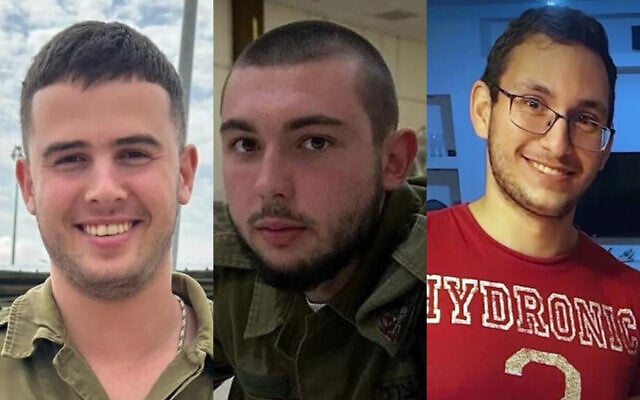 L-R: Sgt. Ron Sherman, Cpl. Nik Beizer, and Tamir Nimrodi, abducted by Hamas terrorists from a base near the Erez Crossing on October 7, 2023. (Courtesy)
L-R: Sgt. Ron Sherman, Cpl. Nik Beizer, and Tamir Nimrodi, abducted by Hamas terrorists from a base near the Erez Crossing on October 7, 2023. (Courtesy)The investigation found that some 20 terrorists from Hamas’s elite Nukhba force invaded the base first, carrying out killings, abductions, looting and “other cruel crimes.” Later in the day, another 100 terrorists, some of whom were members of the Palestinian Islamic Jihad and others who were unaffiliated, infiltrated the area and carried out additional looting.
The probe determined that the number of troops deployed to the area before the onslaught would not have been enough to defend the site even in a smaller scenario than what ultimately played out on October 7, 2023.
The investigation also found that if the troops had been prepared differently, they likely could have prevented the terrorists from invading the Gaza liaison base.
The base was also being used to house a company of backup troops, meaning a force that was not assigned to defend any specific part of the border or any town, but rather respond in the event of an incident. The probe found that having those troops stationed there prevented further harm to the base, but they still failed to defend the facility.
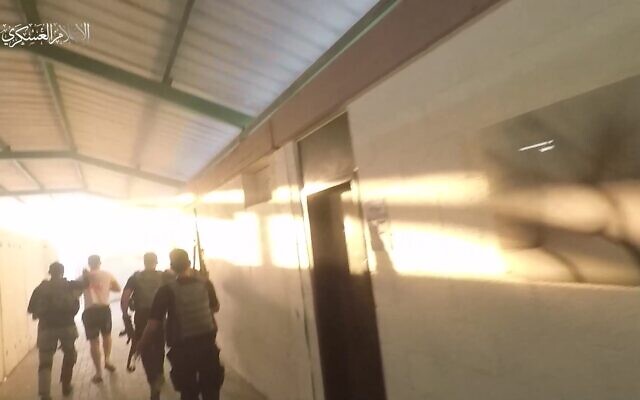 Hamas terrorists abduct soldiers from an army base next to the Erez Crossing, on October 7, 2023, in footage released by the terror group. (Screenshot: Telegram)
Hamas terrorists abduct soldiers from an army base next to the Erez Crossing, on October 7, 2023, in footage released by the terror group. (Screenshot: Telegram)The probe said that the base’s main entrance was quickly captured by the terrorists, allowing many of them to quickly reach the center of the facility. And yet, the soldiers had nearly half an hour to prepare for the invasion, from the moment they spotted the first terrorists at the adjacent Erez Crossing at 6:35 a.m. to the first infiltration shortly before 7 a.m. The investigation stated that this time was not used correctly by the troops to prepare for an invasion of the base.
The investigators also pointed to a lack of command and control, leading many soldiers to act on their own accord amid the fighting.
Similar to the Nahal Oz base, the investigation also noted that the Gaza liaison base, despite its proximity to the Strip, does not serve as a military post that can be defended. The large base, which serves several military units and a Defense Ministry unit, was a “weak spot” in terms of being able to defend it from a ground-based attack, the investigators found.
Of the 120 terrorists who invaded the area, a total of nine were killed by troops inside the base, while dozens more were killed in the Erez Crossing area by airstrikes, according to the probe.
The timeline of the attack
Ahead of the October 7 onslaught, the 7th Armored Brigade’s 77th Battalion was responsible for defending the north Gaza border area, including the Erez Crossing and Gaza liaison base. The battalion’s backup company was stationed at the liaison base. The crossing itself was manned by five Defense Ministry security guards, as it was a weekend and no pedestrian traffic to and from Gaza was expected.
At 5:30 a.m. on October 7, Israeli troops stationed in the area took their positions along the Gaza border in a shift change. The Hamas onslaught began an hour later.
At 6:29 a.m., Hamas launched an initial barrage of over 1,000 rockets, mostly aimed at Israeli military bases and posts near the Gaza border. Troops stationed at the base headed for bomb shelters.
At 6:32 a.m., soldiers monitoring surveillance cameras identified a group of terrorists on pickup trucks heading from Gaza toward the Erez Crossing.
Between 6:32 and 6:42 a.m., the Hamas terrorists breached Israel’s border barrier with Gaza in several locations, infiltrated into Israel, and headed toward the Erez Crossing, the Gaza liaison base and the nearby community of Erez.
At 6:42 a.m., the first Hamas terrorists infiltrated the Erez Crossing, capturing the vehicle lane and pedestrian terminal. Some of the terrorists climbed onto the roof of the crossing in an attempt to carry out sniper fire from there on the Gaza liaison base.
Some of the backup troops stationed in the base tried to reach the Erez Crossing and meet up with the Defense Ministry security guards, though they were unable to due to the terrorists’ gunfire. The troops turned around and began to head for the nearby community of Netiv Haasara, where an infiltration was reported.
At 6:50 a.m., a commander of one of the backup company’s platoons called his troops to return to the base and prepare for an attack by the terrorists there. He also instructed a team led by a sergeant to defend the base with him.
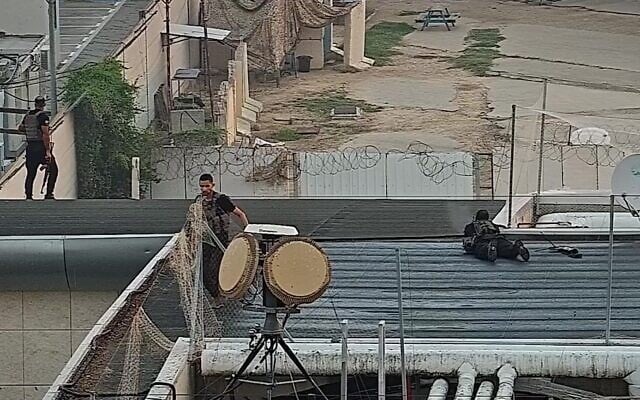 Hamas terrorists set up sniper positions atop the Erez Crossing on October 7, 2023. (Defense Ministry)
Hamas terrorists set up sniper positions atop the Erez Crossing on October 7, 2023. (Defense Ministry)At 6:52 a.m., the five Defense Ministry security guards spotted dozens of terrorists approaching them from the pedestrian terminal. The guards fled to the second floor of the terminal and locked themselves in a room there.
At 6:54 a.m., a group of terrorists reached the southeast side of the base, and planted a bomb on its perimeter wall, in an attempt to bring it down. The explosion did not succeed in destroying the wall.
At the same time, the operations sergeant on duty that morning at the base spotted the terrorists advancing toward a position outside the base used by a team of soldiers operating surveillance balloons. She called on the soldiers to head into the base.
Several minutes later, the first terrorists managed to breach the base from its back entrance in the south of the facility. Troops were already stationed in the area and exchanged fire with the terrorists.
Another team headed for the eastern side of the base to prevent an infiltration via the facility’s main entrance. Meanwhile, one of the troops spotted a terrorist on the roof of the Gaza Crossing terminal and opened fire, killing him.
 Hamas terrorists attack an army base next to the Erez Crossing, on October 7, 2023, in footage released by the terror group. (Screenshot: Telegram)
Hamas terrorists attack an army base next to the Erez Crossing, on October 7, 2023, in footage released by the terror group. (Screenshot: Telegram)At 7 a.m., three of the balloon operators ran toward the base to try and seek shelter, only to find that the bomb-safe rooms there were locked. (They had previously been converted into offices and no longer served as bomb shelters.) Their commander joined them shortly after, as they hid in a concrete pipe.
Meanwhile, the terrorists had managed to breach the main entrance to the base. A commander on duty that morning opened fire, delaying the terrorists from entering the base by several minutes. After running out of ammunition, at 7:04 a.m., the commander headed to the base’s war room, where he locked himself and others up.
The terrorists, meanwhile, entered the base from the main entrance and split up, heading for different areas of the base.
One terrorist hurled a grenade toward the base’s dining hall, close to where the balloon operators were hiding. As a result of the explosion, the soldiers ran out of the concrete pipe and headed for the war room. The terrorists opened fire on them, killing two: Staff Sgt. Or Mizrahi and Staff Sgt. Max Rabinov.
The terrorists advanced into the barracks of the Gaza liaison base, where they murdered three other soldiers and abducted three others: Sherman, Beizer and Nimrodi.
At 7:22 a.m., an Israeli Air Force drone carried out its first strike in the Erez Crossing area. Simultaneously, troops were exchanging fire with the Hamas terrorists around a bomb shelter in the parking lot of the base. One soldier was killed and another was wounded during the exchange, and the troops asked for backup.
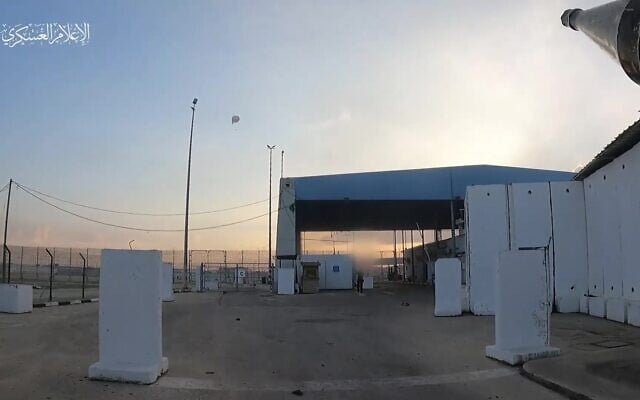 Hamas terrorists attack the Erez Crossing on October 7, 2023, in footage released by the terror group. (Screenshot: Telegram)
Hamas terrorists attack the Erez Crossing on October 7, 2023, in footage released by the terror group. (Screenshot: Telegram)Moments later, three troops led by the sergeant tried to join up with the other soldiers. As the four arrived, the terrorists opened fire, killing the sergeant. The commander of a platoon then engaged the terrorists, killing two.
At 7:34 a.m., the fighting continued, with the terrorists firing several RPGs at the forces, killing one soldier.
In an attempt to gather more forces, the platoon commander led his troops further back into the base. At 7:38 a.m., the team entered the female officers’ barracks and fought from there against the terrorists who breached the base. One soldier was killed fighting there, and the troops killed two Hamas terrorists.
At 8:22 a.m., several IAF drone strikes were carried out on Hamas vehicles in the area. Some were hit, while others turned around and headed back to Gaza. The investigation found that these strikes prevented another wave of terrorists from invading the base.
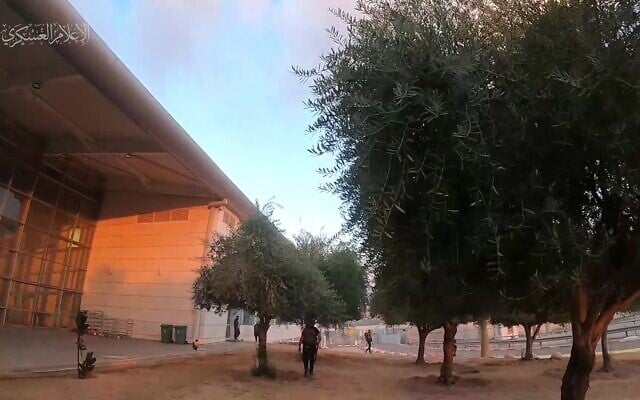 Hamas terrorists storm into the Erez Crossing’s pedestrian terminal on October 7, 2023. (Defense Ministry)
Hamas terrorists storm into the Erez Crossing’s pedestrian terminal on October 7, 2023. (Defense Ministry)By 8:30 a.m., the fighting at the base had concluded, with the Hamas terrorists either killed or having returned to the Strip. Most of the soldiers began to exit the base at this stage.
Between 9 a.m. and 9:30 a.m., the platoon commander instructed troops who were stationed next to the base’s kitchenette to remain inside a bomb shelter because the IAF was set to carry out several strikes in the area.
At 9:30 a.m., the company commander reached the kitchenette area and saw that no troops were there, and mistakenly thought that there was nobody left in the base to rescue, when in fact several were hiding inside the bomb shelter.
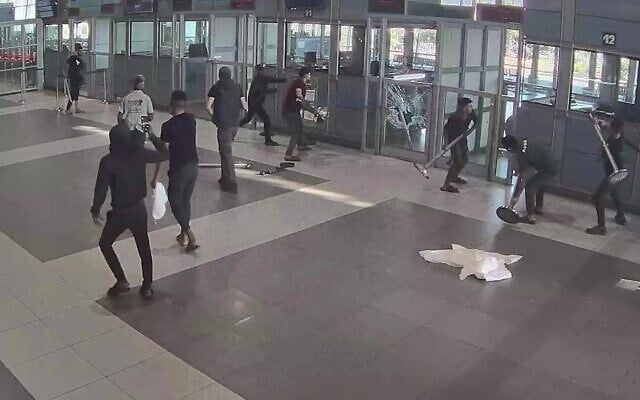 Terrorists cause damage to the Erez Crossing’s pedestrian terminal on October 7, 2023. (Defense Ministry)
Terrorists cause damage to the Erez Crossing’s pedestrian terminal on October 7, 2023. (Defense Ministry)At 10:30 a.m., around 100 terrorists from the Palestinian Islamic Jihad and other unaffiliated Palestinians infiltrated the base and carried out looting and arson.
The company commander was hiding with another soldier, and as he heard the terrorists, he continued to believe that there were no more soldiers on the base. At 1:30 p.m., the commander left the base and headed for Netiv Haasara with the second soldier, escaping the second wave of terrorists.
At 3 p.m., members of the elite Yahalom combat engineering unit reached the base and began to search it. The troops did not encounter any living terrorists during their searches, and they found the soldiers who were hiding in the bomb shelter.
At 3:45 p.m., members of the Paratroopers Brigade’s reconnaissance unit headed for the Erez Crossing pedestrian terminal, where they rescued the five Defense Ministry security guards who were hiding in a server room. The paratroopers did not encounter any terrorists amid the searches.
By 7 p.m., the Yahalom soldiers brought all the Gaza liaison office soldiers to the Yad Mordechai Junction, and those wounded were taken to hospitals. By 11 p.m., the command over the base was returned to the regional unit. link
- In swift U-turn, Netanyahu nixes nomination of Shin Bet head amid opposition from allies
Just 24 hours after announcing pick, PM recants ‘after further thought,’ say he’ll interview other candidates; Gantz: Move shows ‘political pressure overrides good of the country’. full article Once again, we see how weak and petty Netanyahu is and it is all about politics and his own personal political survival - Police believe Qatargate suspect passed messages to media from Qatar under guise of coming from Netanyahu’s office
Police suspect that Jonatan Urich, an aide to Prime Minister Benjamin Netanyahu, passed along messages to reporters on behalf of Qatar, under the pretense that the messages were coming from senior Israeli political and security officials, according to Hebrew outlet reports.
People protest against Prime Minister Benjamin Netanyahu's government outside the Knesset in Jerusalem, Monday, March 31, 2025. (AP Photo/Ohad Zwigenberg)The suspicion is raised during a hearing this morning at the Rishon LeZion Magistrate’s Court, where police are requesting to extend the detention of Urich and his colleague Eli Feldstein, a former spokesman for Prime Minister Benjamin Netanyahu, as part of an ongoing probe into the so-called Qatargate affair.
The two were detained for questioning by police yesterday and later taken into custody, and are suspected of having maintained illicit ties with Qatar while working in the Prime Minister’s Office.
During the hearing today, a police investigator claims that the messages Urich relayed to the media were “actually messages from a source which maintains business and financial ties with the state of Qatar.”
Hearing proceedings also reveal that both Urich and Netanyahu had been asked during their interrogations yesterday whether the former had leaked confidential information from the cabinet, according to a report from the Kan public broadcaster.
Tomorrow, the gag order over the investigation will be lifted, after the court ruled on its cancellation following a request from Urich and Netanyahu’s attorney, Amit Hadad.
Netanyahu aide Urich suspected of passing secret information to Qatari lobbyist
- Lapid asks Knesset Speaker to take action after police rough up MKs, protesters
Following last night’s anti-government protests, during which police were filmed manhandling MK Naama Lazimi of The Democrats party, Opposition Leader Yair Lapid appeals to Knesset Speaker Amir Ohana (Likud) to demand that police protect both demonstrators and lawmakers.
“In recent weeks, the Israeli government has lost all restraint, and is carrying out a relentless attack on the character of the country and its values,” Lapid writes to Ohana in a letter shared by his spokesman.
“Hundreds of thousands of Israeli patriots are taking to the streets to defend the country they love. Unfortunately, we are witnessing cases of police violence against protesters and MKs. Just last night, MK Naama Lazimi was attacked by police, as have other cases in the past in which MKs Gilad Kariv, Naor Shiri and Vladimir Beliak were attacked, along with many citizens,” he continues.
Accusing Ohana of remaining silent “in the face of violence by law enforcement,” Lapid demands that he “work with Police Commissioner Danny Levy to regulate the treatment of protesters and MKs during demonstrations and demand that he protect them.”
Despite people screaming that she was a member of Knesset, law enforcement officers on Monday evening grabbed, pulled and shoved MK Lazimi as she screamed in fear.
Following the attack, Lazimi accused the police of helping the government suppress democracy.
The police are working “for the coup government, a Kahanist criminal and a prime minister suspected of serious security incidents,” she tweeted at the time.
- Under pressure in Gaza, Hamas looking to attack Jews, Israelis abroad, warns NSC
Hamas is expected to ramp up its efforts to attack Jewish and Israeli targets abroad, the National Security Council says in a new threat assessment and travel warning issued ahead of the Passover holiday.
“The group’s deteriorating situation in Gaza and the resumption of fighting are expected to further increase its attempts to conduct attacks,” says the NSC.
In December 2023, Hamas cells in Denmark, Germany and the Netherlands were arrested on suspicion of plotting to attack Jewish targets in Europe. The following April, Bulgarian police uncovered a stash of weapons linked to four suspected Hamas members arrested in Germany and the Netherlands.
The NSC points to Iran as the main backer of global terrorism targeting Jews and Israelis.
In October, the Swedish intelligence agency Sapo said that Iran may have been involved in recent explosions and gunfire around Israeli embassies in Sweden and Denmark.
In May of last year, Sapo said that Iran was recruiting members of Swedish criminal gangs to commit “acts of violence” against Israeli and other interests in Sweden — a claim Iran denied.
“Additionally, Iranian terror operatives have continued attempts to lure Israeli citizens — both domestically and abroad — through deceptive business offers or impersonation, aiming to harm or abduct them,” says the NSC.
ISIS and global jihadist organizations are increasing their operations in Europe, says the NSC, raising the risk of lone wolf attacks. The warning also notes arson attacks and an attempted car bombing in Australia, and a rash of Molotov cocktail and shooting attacks at Jewish institutions in Canada.
“The climate of hate against Israelis and Jews due to the ongoing war continues to fuel terrorist efforts, both from organized cells and individual attackers,” according to the NSC.
“The potential expansion of war zones” — a possible reference to the growing IDF operation in Gaza — could further increase the motivation of terrorists and others to attack Israelis abroad, says the assessment.
The NSC warns that the Sinai Peninsula, a popular tourism destination for Israelis, remains a “high-risk area,” and that Israelis should not visit.
The warning urges Israelis to exercise caution when traveling abroad and to check NSC travel recommendations before flying.
Personal Stories
Acronyms and Glossary
ICC - International Criminal Court in the Hague
IJC - International Court of Justice in the Hague
MDA - Magen David Adom - Israel Ambulance Corp
PA - Palestinian Authority - President Mahmud Abbas, aka Abu Mazen
PMO- Prime Minister's Office
UAV - Unmanned Aerial vehicle, Drone. Could be used for surveillance and reconnaissance, or be weaponized with missiles or contain explosives for 'suicide' explosion mission
Join my Whatsapp update group https://chat.whatsapp.com/IQ3OtwE6ydxBeBAxWNziB0
Twitter - @LonnyB58 Bluesky - @lonny-b.bsky.social
Twitter - @LonnyB58




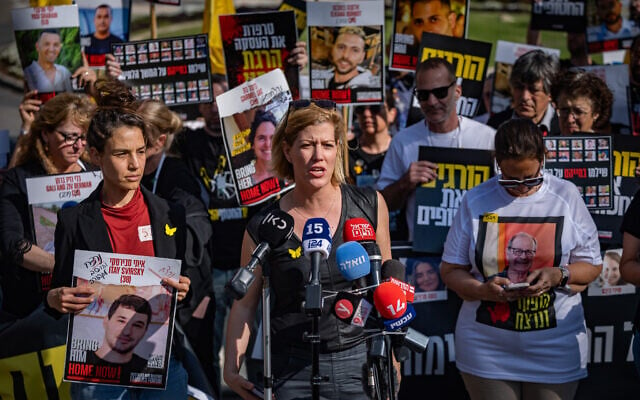

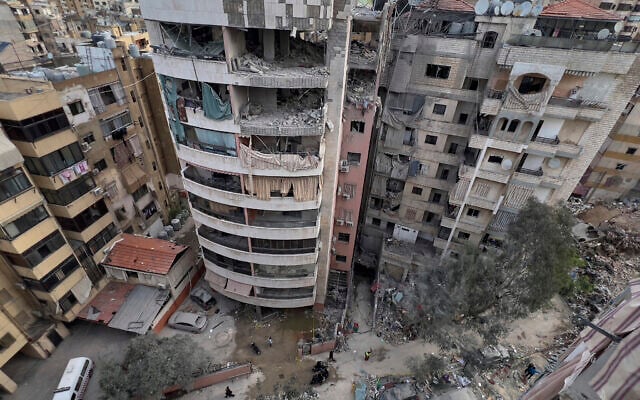
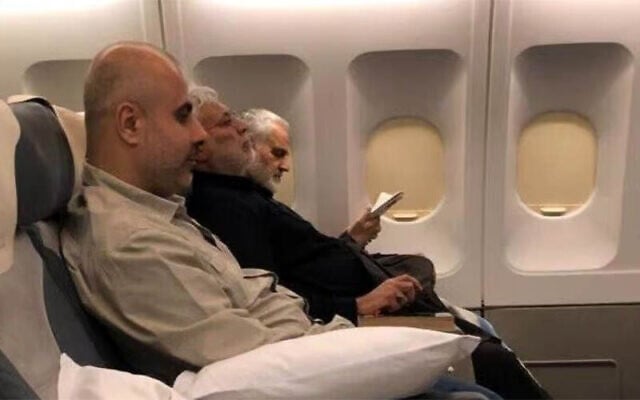



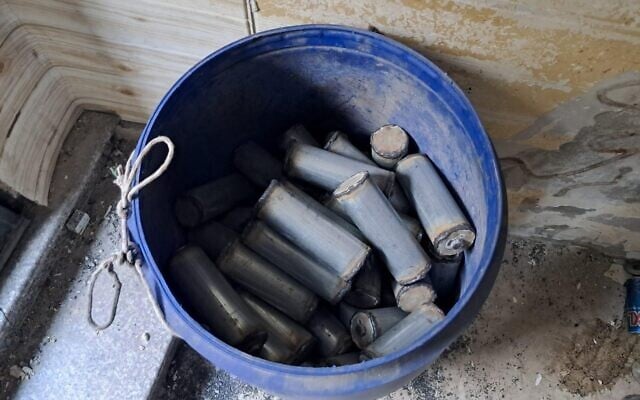
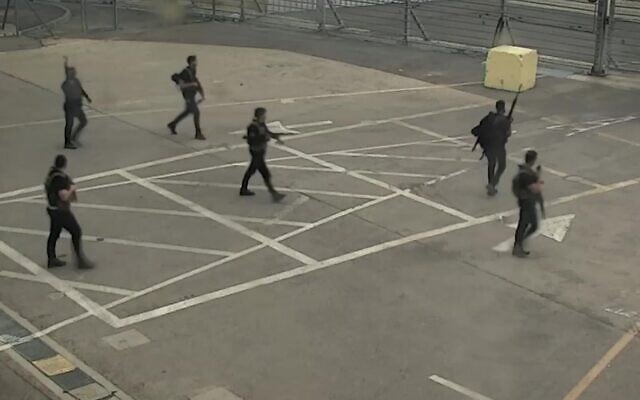

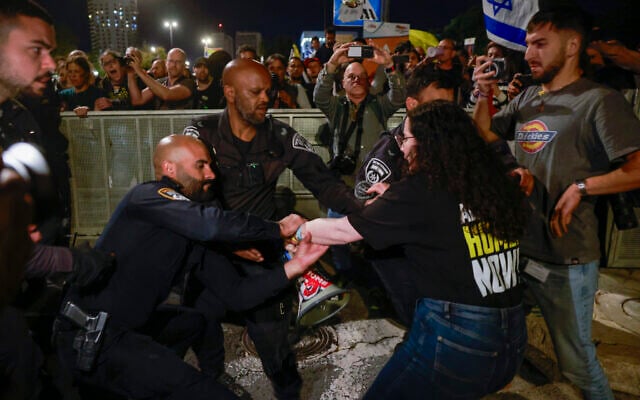
Comments
Post a Comment